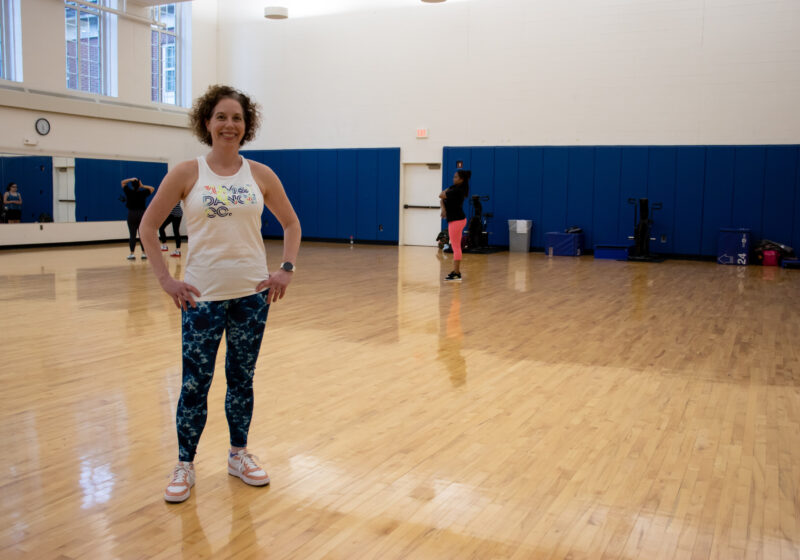An abnormally filled house at the Eastman Theatre awaited the presentation of one of Beethoven’s final, as well as most complex, works, “Missa Solemnis” last Friday. The sheer amount of musicians needed to perform this work is immense. Onstage there was a 70-piece orchestra and an 180-person chorus, not including the four vocal soloists and conductor. Beethoven was beginning to discover with this work as well as with his Ninth Symphony something that later Romantic composers would further expand upon. The greater the size of the orchestra, the larger of a visual as well as aural impact a piece can have on an audience, as well as adding to the sense of event that each performance of a piece takes on. However, with any work that takes on a special sense of event in its performance, the expectations of an audience are also raised, and in this case, unfortunately, the overall performance of the work was disappointingly pulled off. “Missa Solemnis,” like all masses, consisted of several movements each corresponding to a part of a Christian mass. These movements are ‘Kyrie,’ ‘Gloria, Credo,’ ‘Sanctus/Benedictus’ and ‘Agnus Dei.’ Now all of these movements were different, but there were some overriding characteristic qualities in the performance of each movement. From the opening of the ‘Kyrie,’ Beethoven wanted the richness and beauty of the chords to be realized. Unfortunately, the full chorus, a combination of the Eastman Chorale as well as the Eastman Rochester Chorus, which in itself is a combination of Eastman students and Rochester locals, never hit one perfectly in tune chord throughout the entire performance. Take into account that this huge chorus of 180 people only make up half of Eastman students, and Missa Solemnis is a very challenging work to be sung, and you get a very flat and uninteresting sound out of the chorus.If they were one thing, however, the chorus was loud. This is a good thing in a lot of ways, since the words and different voicings of the chorus were heard very well in the Eastman Theatre. However, the same cannot be said for the orchestra. The Eastman School Symphony Orchestra seemed to be performing well below the high standard that they had set through their seven previous concerts this year. At this concert, however, there were a lot of problems that stuck out while listening to the orchestra. For one, the orchestra just wasn’t loud enough. For most of the performance, the choir covered up the orchestra. Most of the woodwinds solos were way too soft and ended up sounding distant and indistinct. One exception to this was the oboe solos, which penetrated the hall nicely. The brass tuning throughout the night was shaky and rightfully insecure in its implementation. The cellos and strings were also very muted the whole performance, and were completely unheard during sections where the rest of the orchestra and chorus was singing. One more note – the timpani was much too timid throughout the piece and lacked the driving punch to boost the energy level of the sound. All of my comments are equating to one issue, which I will touch upon later. When the sound of a concert ends up totally out of balance and effectively uninteresting to the listener, my attention always turns towards one person, the conductor. In this case, professor of conducting and choral ensembles here at Eastman, William Weinert took the baton as a guest conductor of the Eastman School Symphony Orchestra, a group regularly conducted by Neil Varon. Weinert was conducting a group of musicians and instruments that he normally doesn’t rehearse with a shortened timetable of rehearsals. That aside, though, there were some fundamental flaws in his conducting. As I watched him lead the orchestra, his conducting seemed incoherent and disjointed. His downbeat was unclear and his beat two, three and four all looked like his downbeat. I noticed quite a few mistakes in his conducting as well, when he would actually beat a measure in the wrong time signature. Of course, none of it seemed to matter since for the majority of the piece he stuck to a circle of downbeats anyway. It’s amazing that everything held together as well as it did. One truly standout part of the performance was the soloists. Soprano Mari-Yan Pringle, mezzo-soprano Abigail Fischer, tenor Min Jin and bass-baritone Ted Christopher were excellent. Their powerful voices filled the hall and grounded the music every time one of them entered. Also notable was a well-played violin solo from concertmistress Emily Schmitz during one of the more transparent moveents of Missa Solemnis in the ‘Sanctus/Benedictus.’ The point I want to make is something which I think is not taken into account nearly enough and that is the incredible requirements of performing in Eastman Theatre. To project into a 3,094 seat theater, one must not only play loud, but exaggerate every articulation, crescendo/diminuendo and musical gesture. Each musician must push his sound out there for the person in the last row of the balcony to hear. This is a huge thing that separates the professional musicians in the world’s major orchestras from college level orchestras, the knowledge of how loud you actually need to play to get your sound through to the listener, and that everything sounds different 300 feet away than it does to the performer onstage. This hour and a half performance of “Missa Solemnis” was met with a partial standing ovation of the crowd, and two curtain calls. Indeed, this was not a truly bad concert, despite the tone of this review. The concert however, had some major flaws that require notice – poor tuning, sloppy playing and a lackluster vision of the piece, which lacked excitement. In the future, I hope ambitious projects such as playing “Missa Solemnis” continue, as there are numerous great orchestral/choral works. Hopefully next year, the proper preparation will be made to insure a solid and great performance. Levy can be reached atjlevy@campustimes.org.
Dance
Zumba in medicine, the unexpected crossover
Each year at URMC, a new cohort of unsuspecting pediatrics residents get a crash course. “There are no mistakes in Zumba,” Gellin says.
divestment
An open letter to all members of any university community
I strongly oppose the proposed divestment resolution. This resolution is nothing more than another ugly manifestation of antisemitism at the University.
rochester
UR Softball continues dominance with sweeps of Alfred University and Ithaca College
The Yellowjackets swept Alfred University on the road Thursday, winning both games by a score of 5–4.

